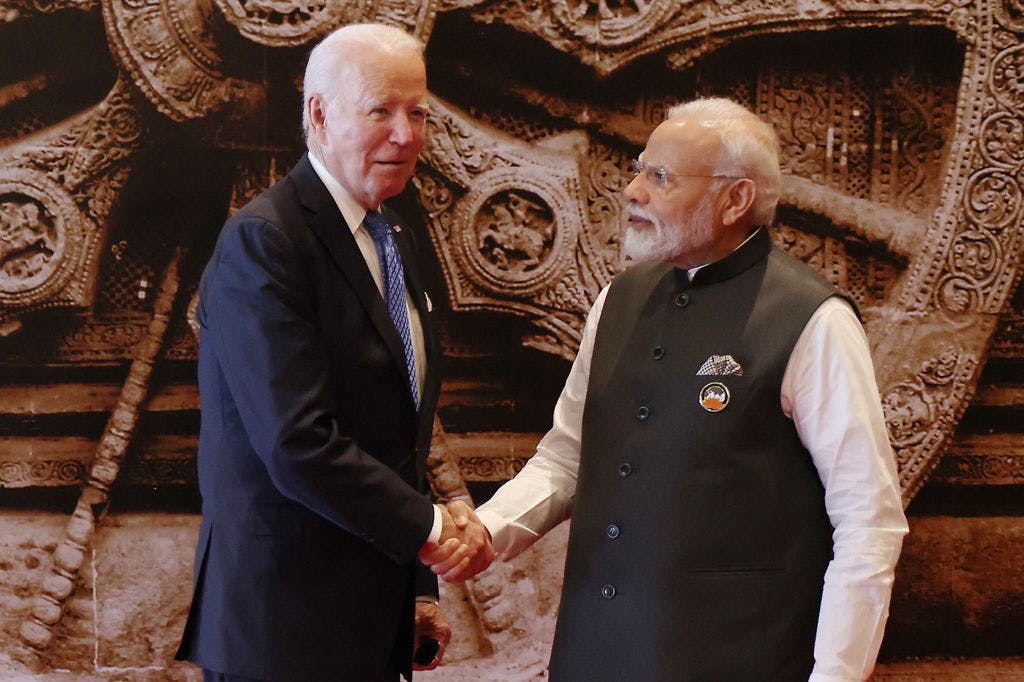To Counter China’s Expansionist Ambitions, Extend the Indian-European Corridor Eastward
The free flow of goods between Europe, the Middle East, and the Indo-Pacific is critical to global trade — and America’s strategic interests.

Born at New Delhi and announced by President Biden, an ambitious plan for a transport corridor connecting India with the Middle East and, ultimately, Europe, is a potential game changer for global trade. Yet, this visionary plan could be vastly improved if, rather than ending in India, it extends farther east, where it can counter Communist China’s expansionist ambitions.
As currently envisioned, the shipping and rail corridor would include India, Saudi Arabia, the United Arab Emirates, Israel, the European Union, and other countries in the G20. Prime Minister Narendra Modi asserted that the India-Middle East-Europe corridor will become a basis of world trade for the coming centuries. India, indeed, is central to this project, first conceived during a meeting of the America, Israel, the UAE, and India in September 2022 — a group known at Delhi as the Western Quad.
The American-proposed passageway, which gives India a pivotal role, intends to bring Delhi closer to Washington, particularly in its rivalry with China. It immediately comes to mind that the corridor could serve as an ambitious counter to China’s own Belt & Road Initiative, which seeks to connect more of the world to that country’s economy.
The Delhi announcement comes at a time when Washington is encouraging Saudi Arabia to normalize ties with Israel — a linkage critical for the corridor reaching the Mediterranean on its way to Europe. There are many obstacles to realizing the American vision. However, they can be overcome with diplomatic acumen and money.
Yet, if Washington’s goal is to circumvent Chinese influence, the announced corridor lacks an Eastern Extension. This Western-oriented corridor neglects important US allies such as South Korea, Japan, Singapore, Taiwan, and Thailand — states that are essential elements in the ongoing American competition with China.
They are all export-oriented and are energy-dependent upon the Middle East. A considerable part of their markets are in Europe and their security and prosperity hinge upon American willingness and capability to secure freedom of the maritime routes east of India.
Moreover, the main arena of the U.S.-China competition is the Indo-Pacific. An Eastern elongation of the corridor could be critical, moreover, to additional states such as Australia and the Philippines, with Indonesia and Vietnam also being potential supporters. Some of these states are democracies that deserve American protection and are clearly in the American camp.
Extending the corridor to the Indo-Pacific emulates George Kennan’s containment strategy, aired in 1946 to parry Russian expansionism. The Eastern Extension has two main choke points, the Malacca and Taiwan Straits. A significant fraction of world trade travels via the two straits in both directions.
Some 25 percent of all world oil transported by sea, primarily to East Asia from the Middle East, passes through these straits. Over 100,000 vessels pass through the straits annually. Significantly, the Indo-Pacific has long been considered the world’s manufacturing hub with a large proportion of its manufactured goods going westward.
Any trade corridor needs to be militarily defended. America must control both straits via its allies or its own maritime power in order to maintain freedom of navigation there. An uninterrupted flow of goods from Europe and the Middle East to the Indo-Pacific is critical. Only an America that can supply security for the trade routes can reassure its allies and hedging states about American seriousness to help in case of greater Chinese encroachment.
America possesses several diplomatic and military arrangements to respond to increased Chinese economic and military power. The Quadrilateral Security Dialogue, commonly known as the Quad, is a strategic security dialogue among Australia, India, Japan, and the U.S.
Less well-known is the Indo-Pacific Partnership for Maritime Awareness, an offshoot of the Quad, intended to monitor China’s military activity and illegal fishing. America is also a member of the Five Eyes intelligence alliance that includes Australia, Canada, New Zealand, and the United Kingdom. All arrangements may be relatively easily integrated into an Eastern Extension of the corridor.
The corridor, however, is susceptible to hostile interference. Iran can act against free trade in the Western corridor. It already does so by attacking American ships in the Indian Ocean. China acts aggressively in the South Chinese Sea and threatens to invade Taiwan. Any action to disrupt freedom of shipping through the Taiwan Straits would have a significant strategic impact.
The proposed India-Middle East-Europe corridor could be a boon for world trade in its current configuration. Extending the project eastward, though, offers even greater promise to advance American strategic interests in a critical corner of the globe.
A version of this article ran earlier in Asia Times.
